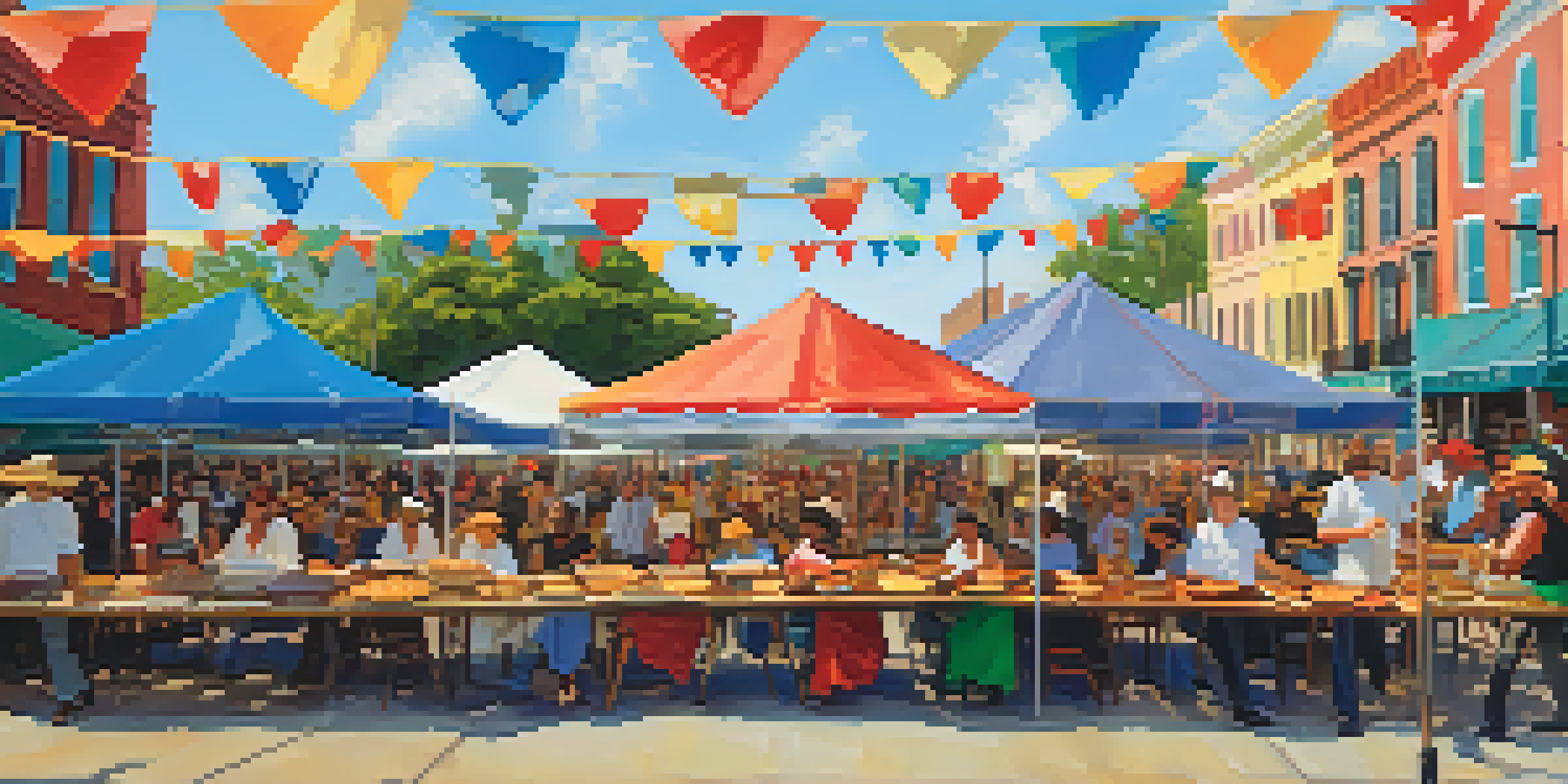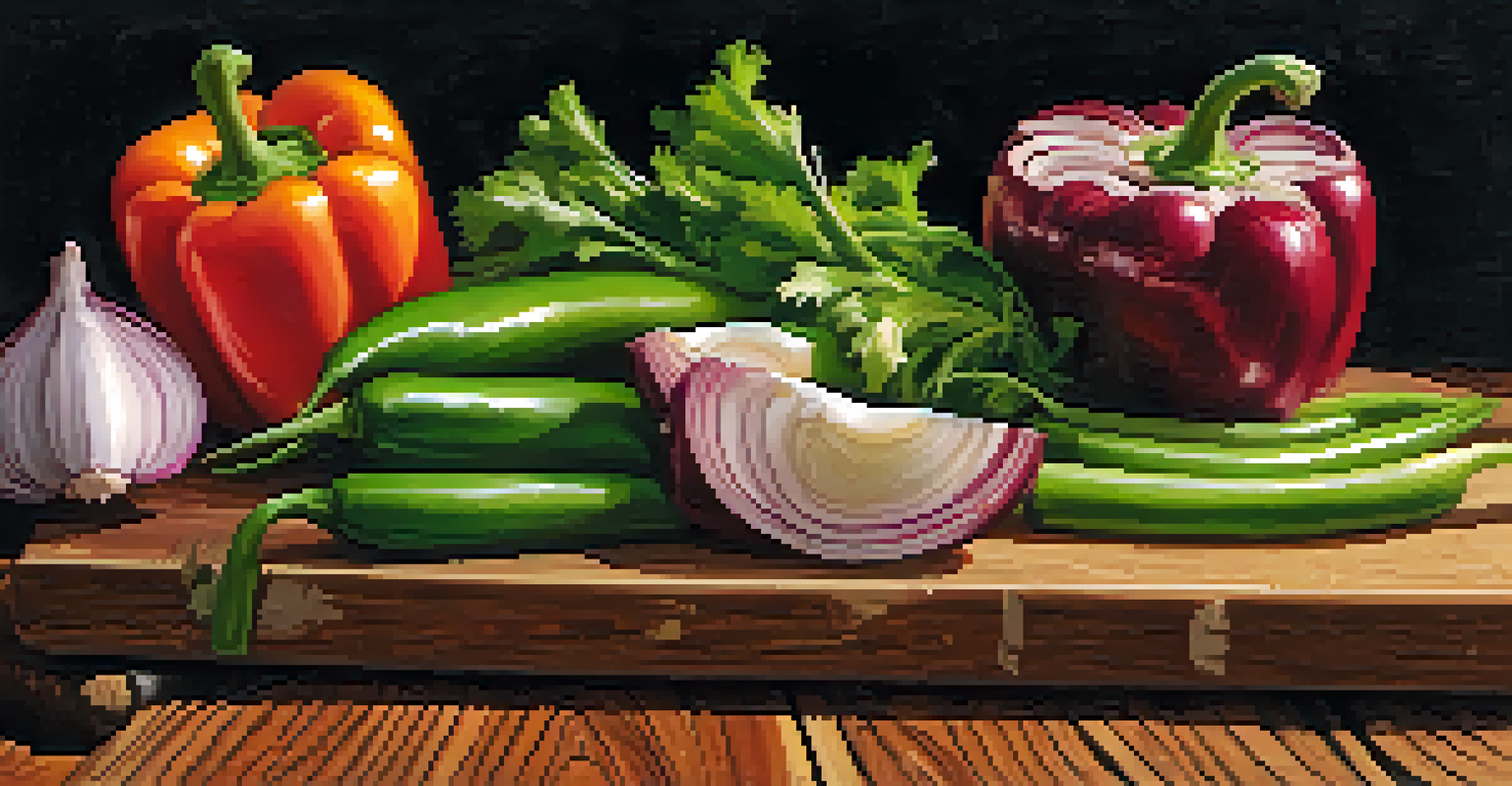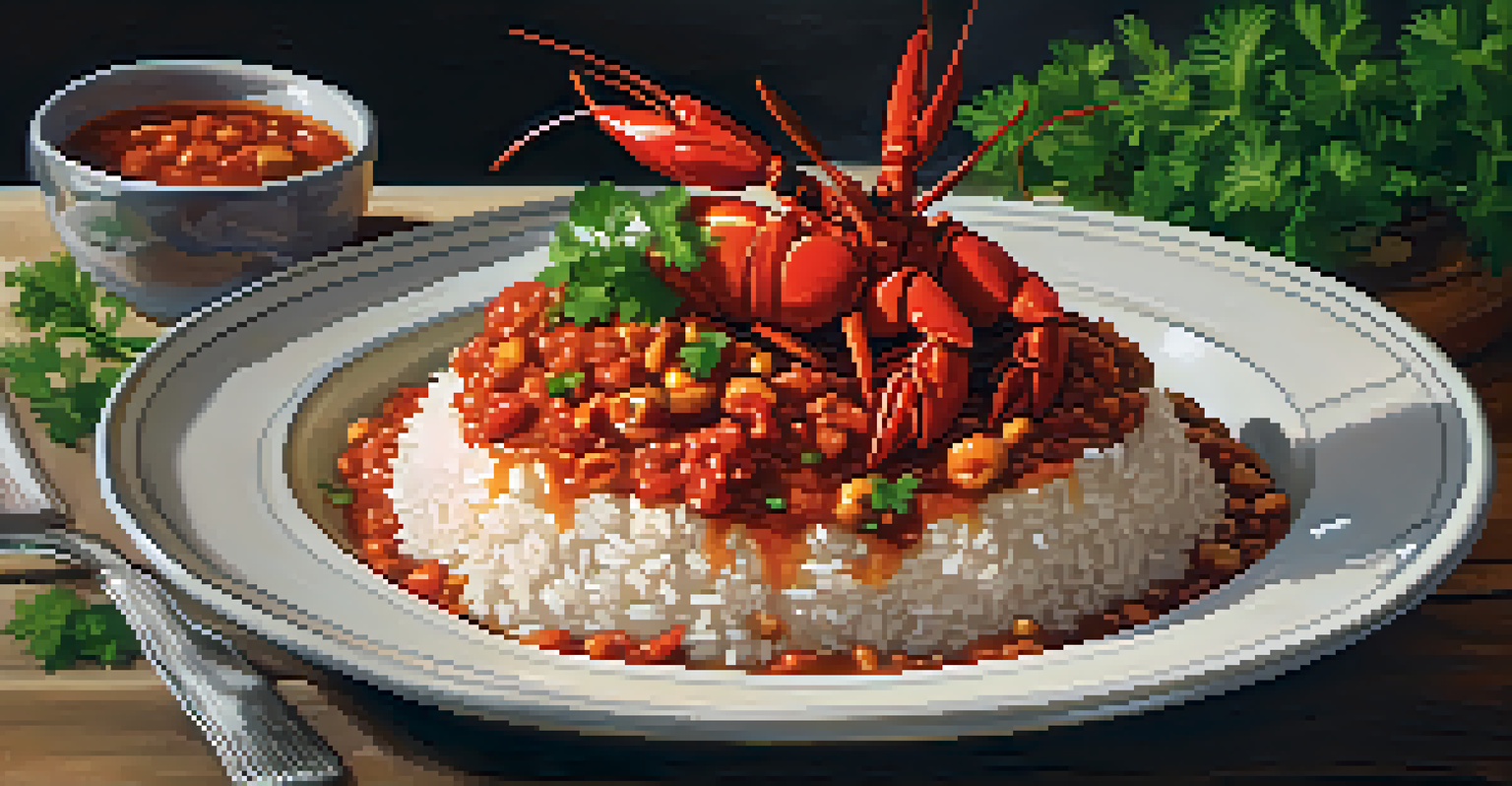Cajun Classics: A Journey Through New Orleans' Spicy Heritage

A Brief History of Cajun Cuisine in New Orleans
Cajun cuisine has deep roots in the cultural tapestry of New Orleans, originating from Acadian exiles in the 18th century. These settlers brought their unique cooking techniques and traditional ingredients, merging them with local resources. Over time, this blend of French, Spanish, African, and Native American influences created a rich culinary heritage that defines Cajun cooking today.
Food is a central part of our culture. It’s a way to connect with others and share our history.
The use of locally sourced ingredients like rice, seafood, and game transformed the way Cajun dishes were prepared. Cooking methods such as smoking, frying, and stewing were adopted, leading to the hearty and flavorful meals we love. This adaptability is a hallmark of Cajun cuisine, reflecting the resourcefulness of those early settlers.
As the years passed, Cajun food evolved, gaining popularity beyond Louisiana. Today, it represents a celebration of community and culture, with dishes that tell stories of resilience and creativity. Each bite is a journey back in time, offering a taste of history alongside an explosion of flavors.
Essential Ingredients of Cajun Cooking
At the heart of Cajun cuisine lies a handful of essential ingredients that bring dishes to life. The 'Holy Trinity'—onions, bell peppers, and celery—serves as the aromatic base for countless recipes, adding depth and flavor. This trio is often joined by garlic, tomatoes, and various spices, creating the perfect foundation for a multitude of dishes.

Rice is another staple, acting as a canvas for many Cajun meals, from jambalaya to gumbo. The versatility of rice allows it to soak up the rich flavors of the accompanying dishes, making every bite a delightful experience. Seafood, particularly shrimp and crawfish, also plays a significant role, showcasing the region's abundance of fresh ingredients.
Cajun Cuisine's Rich Heritage
Cajun cuisine has evolved from the cultural blend of Acadian exiles and local influences, creating a unique culinary identity in New Orleans.
Lastly, don't forget about the spices! Cajun cooking is known for its bold flavors, often achieved through a careful blend of cayenne, black pepper, and paprika. These spices not only heat up the dishes but also add layers of complexity that keep you coming back for more.
Iconic Cajun Dishes You Must Try
When it comes to Cajun cuisine, a few iconic dishes stand out, each with its own story and flavor profile. Gumbo, a hearty stew that combines meats, seafood, and vegetables, is often thickened with a dark roux and served over rice. This dish is a true representation of Cajun culture, showcasing the blend of influences that make it so unique.
Cajun cuisine is about more than just the food; it's about the people, the places, and the stories that come with each dish.
Another must-try is jambalaya, a one-pot dish that mixes rice with a variety of proteins, including chicken, sausage, and shrimp. The beauty of jambalaya lies in its adaptability; every family has their own special recipe. It's a perfect example of how Cajun cooking celebrates community and tradition.
Lastly, don't overlook crawfish étouffée, a rich and flavorful dish that features crawfish smothered in a spicy sauce served over rice. This dish highlights the seafood bounty of Louisiana and is a testament to the region's love for bold flavors. Each of these dishes tells a story, inviting you to savor the rich heritage of Cajun cooking.
The Role of Spices in Cajun Cuisine
Spices are the heartbeat of Cajun cooking, elevating dishes from simple to sensational. The signature heat of Cajun cuisine primarily comes from cayenne pepper, which adds a kick that is both warming and addictive. But it’s not just about heat; the interplay of different spices creates a complexity that defines Cajun flavors.
Paprika, thyme, and bay leaves are commonly used, adding depth and aroma to the dishes. Each spice serves a purpose, harmonizing with others to create a balanced profile that’s both comforting and exciting. This careful craftsmanship is a testament to the culinary expertise passed down through generations.
Essential Ingredients for Flavor
Key ingredients like the 'Holy Trinity' and bold spices are foundational to Cajun dishes, enhancing their depth and complexity.
When cooking Cajun food, the right spices can transform a dish, making it a true representation of the region's vibrant culture. Whether it's a dash of hot sauce or a sprinkle of herbs, these ingredients are essential for capturing the essence of Cajun cuisine. So, the next time you whip up a gumbo or jambalaya, remember: it’s all about that spice!
Cajun Cooking Techniques to Master
Cajun cuisine is as much about the techniques as it is about the ingredients. One of the key methods is creating a roux, a mixture of flour and fat that serves as a thickening agent for many dishes, particularly gumbo. Achieving the perfect roux requires patience and practice, as it can go from light to dark quickly, impacting the final flavor.
Another essential technique is the art of slow cooking. Many Cajun dishes benefit from being simmered for hours, allowing flavors to meld and intensify. This method not only enhances the taste but also brings out the natural richness of the ingredients, creating a comforting meal that warms the soul.
Lastly, don’t underestimate the power of smoking and grilling in Cajun cooking. These methods impart a unique flavor that adds a smoky depth, particularly when preparing meats. Mastering these techniques can elevate your cooking, allowing you to create authentic Cajun dishes that transport you straight to New Orleans.
Celebrating Cajun Culture Through Food
Food in Cajun culture is more than just sustenance; it's a celebration of community, family, and heritage. Gatherings often revolve around shared meals, where people come together to enjoy traditional dishes and exchange stories. This sense of community is a vital part of what makes Cajun cuisine so special.
Festivals like Mardi Gras and the Crawfish Festival highlight the importance of food in Cajun culture. During these events, locals and visitors alike indulge in copious amounts of gumbo, jambalaya, and crawfish, creating an atmosphere of joy and togetherness. It's a time to celebrate the flavors that define the region while honoring the traditions that have been passed down.
Community Celebrated Through Food
Food plays a central role in Cajun culture, fostering community gatherings and traditions that celebrate shared heritage and flavors.
Moreover, food serves as a bridge between generations, with recipes often handed down through families. This connection to the past fosters a sense of pride in the culture and encourages the continuation of culinary traditions. In every bite, you can taste the love and history that make Cajun cuisine truly unique.
Exploring Cajun Cuisine Beyond New Orleans
While New Orleans is the heart of Cajun cooking, the flavors and techniques have spread far beyond the city's borders. Many other regions in Louisiana and beyond have embraced Cajun cuisine, incorporating it into their culinary landscapes. From food trucks to fine dining, Cajun dishes can be found in unexpected places.
In cities like Lafayette and Baton Rouge, authentic Cajun restaurants thrive, showcasing the rich flavors and traditions of the culture. These establishments often feature local ingredients and recipes that reflect the area’s unique culinary identity. It's a testament to the adaptability and popularity of Cajun cuisine, as it continues to evolve while staying true to its roots.

Additionally, Cajun cooking has influenced many chefs nationwide, leading to fusion dishes that blend Cajun flavors with other cuisines. This creative exploration has introduced new audiences to the bold tastes of Cajun cooking, ensuring that its heritage continues to thrive. Whether you’re in Louisiana or elsewhere, there’s no shortage of opportunities to indulge in the spicy goodness of Cajun classics.